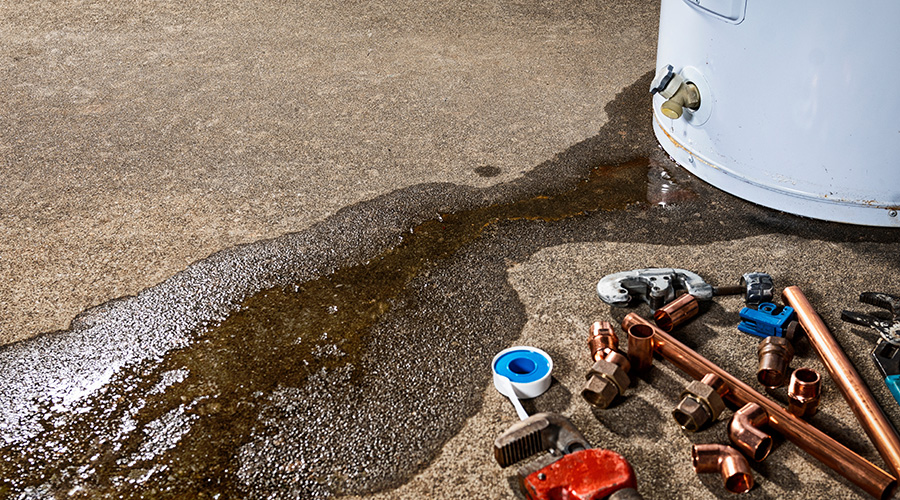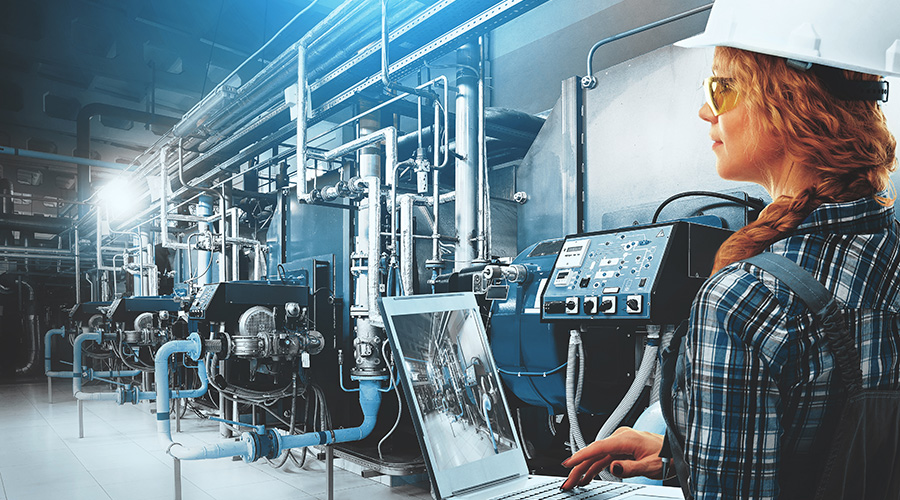Pros and Cons of VAV and Dedicated Outdoor Air Systems (DOAS)
Points of difference include need for air-side infrastructure and availability of air-side free cooling.
With reliability improvements associated with direct digital controls and VFDs, VAV systems became the dominant HVAC system of choice in the 1990s and beyond. Developments in chilled beam have provided another choice for new and renovated facilities using HVAC terminal equipment that use chilled water and heating water. Let’s take a closer look at the pros and cons of VAV and dedicated outdoor air systems (DOAS).
A VAV air terminal is typically mounted in the ceiling plenum and regulates airflow to provide sensible cooling to the area served. Heating coils (hot water or electric) are included in VAV terminals which serve spaces requiring heat. A central variable air volume air handling unit is utilized to provide conditioned supply air — a mixture of outdoor ventilation air and recirculated space air — to the VAV air terminals. Dehumidification is accomplished via the central variable air volume air handling unit.
Advantages of VAV systems include the following points:
• VAV systems are very cost effective from a chilled-water and heating-water-pumping perspective. Because the unit transfers heat to the space using forced convection, the coil heat transfer area required is reduced as compared to a chilled beam. The reduction in coil heat transfer surface area results in lower coil water side pressure drop and lower pumping energy. Forced convection heat transfer also yields higher water side delta T which also results in lower pumping energy.
• VAV systems are excellent systems for serving facilities with occupiable interior spaces, because a VAV system can be designed with air side economizer to provide winter cooling to the interior spaces without having to operate the chilled water plant.
• VAV system generally have lower maintenance requirements as compared to the other systems. This is because there is no chilled water coil at the VAV terminal and, where non-fan powered VAV terminal are used, there is no filter at the unit. All the routine maintenance (filter replacement, condensate pan cleaning) is centrally located at the air handling unit, minimizing maintenance needed within the occupied spaces.
On the other hand, because the central air handling unit provides all cooling to the spaces, it is required to move a much greater volume of air. Thus, the floor space required for air handling equipment and vertical duct risers (shafts) is much more significant when compared to the other systems. Ceiling space requirements are also more significant.
Evaluating DOAS
Now let’s look at DOAS. A DOAS terminal is a fan-powered air terminal mounted in the ceiling plenum, with a chilled water cooling coil mounted at the inlet from the ceiling plenum. DOAS terminals are designed for sensible cooling only, so dehumidification must be provided by a separate dedicated outdoor air unit, while the chilled water supply temperature to the DOAS terminal must be raised several degrees above the design space dew point temperature to prevent condensation in the DOAS unit. Heating coils (hot water or electric) are included in DOAS terminals which serve spaces requiring heat.
On the plus side, DOAS requires minimal air side infrastructure because central air systems are only required for outdoor air ventilation. The result is reduced floor space requirement for central air handling equipment and vertical duct risers (shafts).
But there are several minuses to consider:
• Because the entering chilled water temperature must be several degrees above the space dew point, the water side delta T is generally significantly lower than a fan coil unit or variable volume air handling unit delta T. This results in increased pumping energy for the DOAS terminal system when compared to a fan coil unit system or variable air volume system.
• A dedicated outdoor air unit is required and relied upon to provide building humidity control during the cooling season. This is critical to the performance of the DOAS terminal. The dedicated outdoor air unit must continually provide subcooled/low dew point ventilation air to the building spaces to maintain acceptable humidity levels and prevent condensation at the DOAS cooling coils.
• To prevent condensation at the DOAS terminals during morning start-up, humidity control during unoccupied building hours is required during the cooling season.
• Because the entering chilled water temperature must be several degrees above the space dew point, the DOAS terminal unit leaving air temperature is much higher compared to an FCU or VAV air terminal. Thus, the airside delta T is reduced and greater design airflows are required in the building spaces. This results in higher fan energy, increased fan noise and increased ceiling space requirements.
Related Topics:














